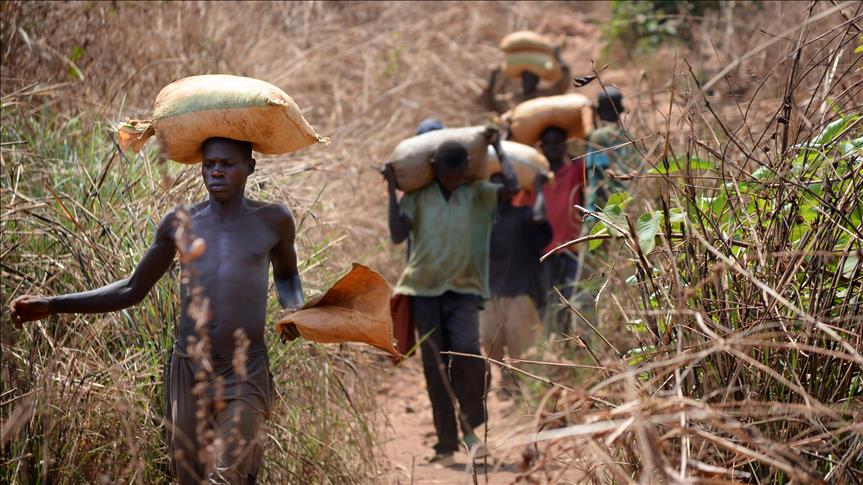Ethiopia facing up to child labor crisis
June 12 marks World Day Against Child Labor but millions of youngsters are still being exploited

Addis Abeba
By Abebech Tamene
ADDIS ABABA, Ethiopia
Eleven-year-old Andualem, one of Ethiopia’s estimated 5.5 million underage workers, does not know that Sunday is World Day Against Child Labor.
Andualem works as welder at an auto-repair shop located in the heart of the Ethiopian capital Addis Ababa. His workplace is also his home.
“I worked as a carwash boy since I was seven. Then I managed to learn welding,” he tells Anadolu Agency.
“Welding is hard work; it’s particularly harmful to the eyes. I live in the garage where I work because the $1-2 a day income is not enough to cover the cost for food and shelter.”
“My parents live in rural parts of the country and I have never been to school. I came to Addis Ababa at the age of seven.”
Another child, Mestawet, sells roasted cereals on the streets.
She says: “My father is a carpenter and my mother is a daily laborer – sometimes they work and sometimes they do not. Therefore, I have to sell the roasted cereals to fulfill our needs.”
“Some people harass me; however, I never stop working” the seven-year-old adds.
According to a survey conducted in five selected regions by the Ministry of Labor and Social Affairs, over 16,500 children work in traditional weaving or are involved in farming.
Just over half of these children say they work to support their families but the majority – 73.4 percent – do not go to school.
Ethiopia’s Central Statistical Agency says out of the country’s total child population of 22 million, more than 5.5 million are laborers between the ages of five and 14. Most of the children work in the informal economy.
According to the ministry, the children are often employed for low wages in 12-hour shifts. Some work on coffee and tea farms. Others in urban dry-waste collection or in small manufacturing shops.
Forty-eight-year-old Agaredech has two children working for traditional weavers.
“What can we do? We are poor and they have to labor for us and themselves,” she says. “I know how it is hard for them; we expect divine intervention.”
Ethiopia, the second most populous country in Sub-Saharan Africa, has a population of 97 million of which almost 30 percent live on less than $0.6 per day, according to the World Bank.
According to the labor ministry, Ethiopia’s economy, which has a 10.9 percent growth rate, has helped families feed and send their children to school.
A long way to go
“Improving livelihoods, confronting child labor through a comprehensive multi-sectoral plan is the strategy to end child labor,” the ministry claims.
In a statement supplied to Anadolu Agency, the government says it is preparing a five-year plan to end child labor in the country.
Thus far, the ministry – in collaboration with NGOs and civic associations – says it has managed to provide direct assistance and enable more than 30,000 children exposed to harmful environments get access to education.
It also said that more than 1,270 underage workers have benefited from technical and vocational training.
“Financial support was also provided to 7,000 families with a view to preventing exposure of children to harmful environments,” it said.
However, for young laborers like Andualem and Mestawet, their future life seems to consist of one thing – non-stop working.
Anadolu Agency website contains only a portion of the news stories offered to subscribers in the AA News Broadcasting System (HAS), and in summarized form. Please contact us for subscription options.


